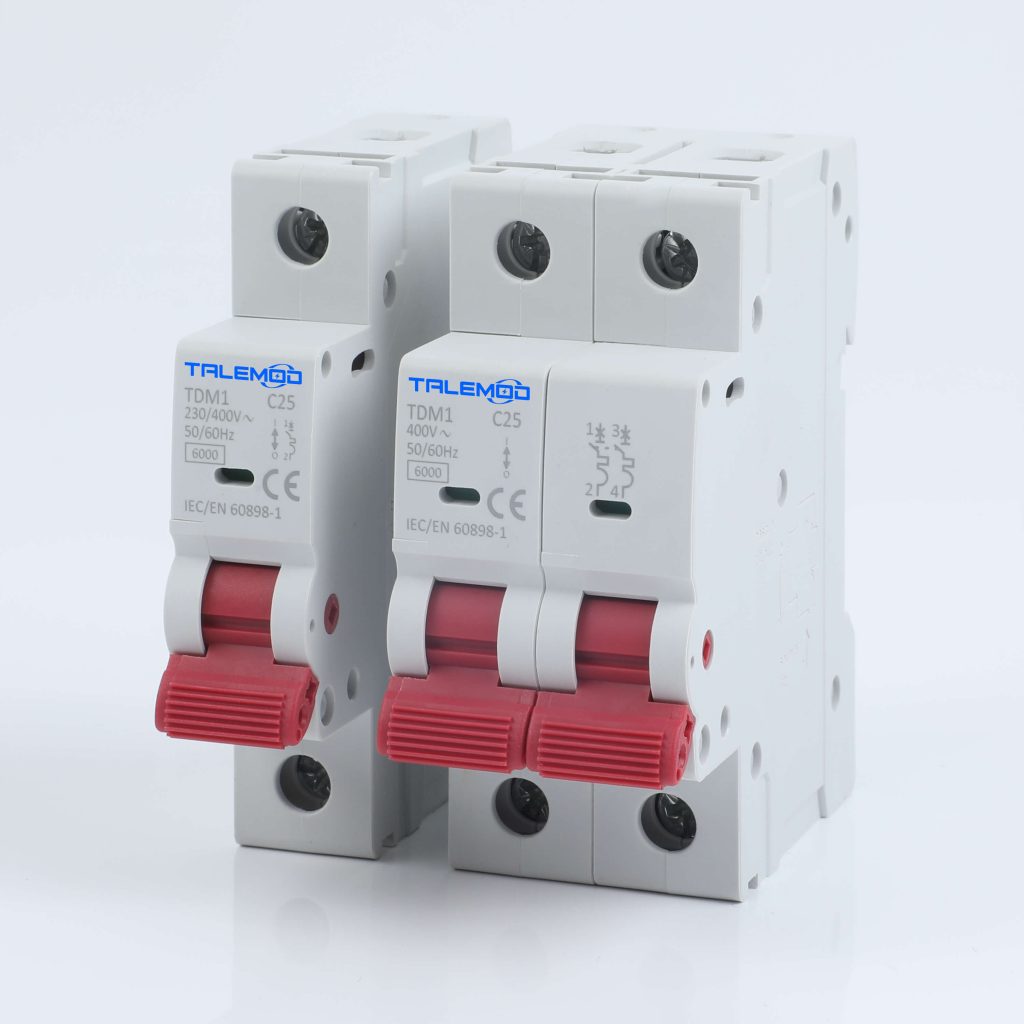Definition and function of MCB
MCB is an automatically operated electrical switch. Miniature circuit breakers are designed to prevent damage to circuits due to excessive current flow. They are designed to trip during overloads or short circuits to protect against electrical faults and equipment failures.

How MCBs work
The miniature circuit breaker is composed of operating mechanism, contacts, protection devices (various releases), arc extinguishing system and so on. Its main contact is closed manually or electrically. After the main contact is closed, the free tripping mechanism locks the main contact in the closing position. The coil of the overcurrent release and the thermal element of the thermal release are connected in series with the main circuit, and the coil of the undervoltage release is connected in parallel with the power supply. When the circuit is short-circuited or seriously overloaded, the armature of the over-current release will pull in to make the free tripping mechanism act, and the main contact will disconnect the main circuit. When the circuit is overloaded, the thermal element of the thermal release will generate heat to bend the bimetal sheet, pushing the free release mechanism to act. When the circuit is undervoltage, the armature of the undervoltage release is released. Also activates the free tripping mechanism.
Application scenarios of MCB
MCB application scenarios include home, industrial, commercial and other environments. In homes, MCBs are often used to control power to appliances such as lights, appliances, and sockets. In industrial and commercial environments, MCBs are commonly used to control machines, equipment and lighting.
Different types of MCBs
There are several different MCB types to choose from – Type A, Type B, Type C, Type D, Type K and Type Z. However, the three key versions are Type B, Type C, and Type D. Each version is designed to respond to the magnitude of electrical surges that may occur in different settings. These changes are commonly referred to as “trip curves”, but may also be referred to as trip characteristics or overcurrent characteristics.
Type A
It is used in occasions that require fast, no-delay tripping and low peak current value (usually 2 to 3 times the rated current In), so as to limit the allowable short-circuit current value and the total breaking time. Utilizing this feature can make MCB replace the fuse as the overcurrent protection of electronic components and the protection of mutual inductance measurement circuit.
Type B
It is used in occasions that require fast tripping and the peak current is not very large. The peak current allowed by the B characteristic is greater than 3In, which is suitable for the protection of incandescent lamps, heaters and other resistive loads and residential lines.
Type C
It allows the load to pass a high short-term peak current without MCB action, and is suitable for most electrical circuits. The C characteristic allows the passing peak current of less than 5In. It is suitable for line protection of fluorescent lamps, high-pressure gas discharge lamps, and power distribution systems.
Type D
It is suitable for switchgear with high peak current of about 10In, such as the protection of primary circuits and solenoid valves of control transformers and local lighting transformers under AC rated voltage and frequency.
There are also some more specialized MCB models available. These include:
Type K MCBs – These MCBs will trip when the current reaches 8 to 12 times the recommended maximum. They are a good choice for motors
Type Z MCBs – These are highly sensitive MCBs that will trip when the current exceeds the rated load by as little as two to three times. They are used with more delicate devices that are prone to short circuits, such as semiconductors.
For lines of various natures, an appropriate MCB must be selected. Including surge current and rated current, etc. Improper selection will cause MCB false tripping.
In addition, it should be noted that MCB cannot be used for motor protection, but can only be used as a fuse replacement protection for wires and cables. Because there will be a high peak value and a long time starting current when the motor starts, it is easy to cause overheating, overload or short circuit, and cause damage to the motor.




